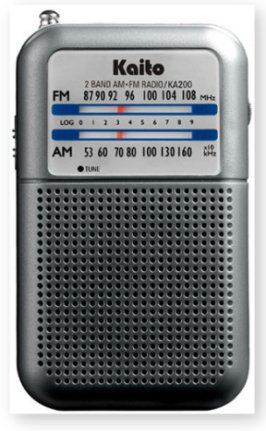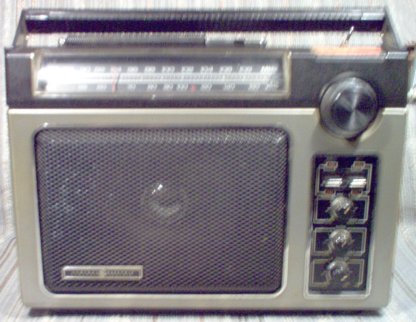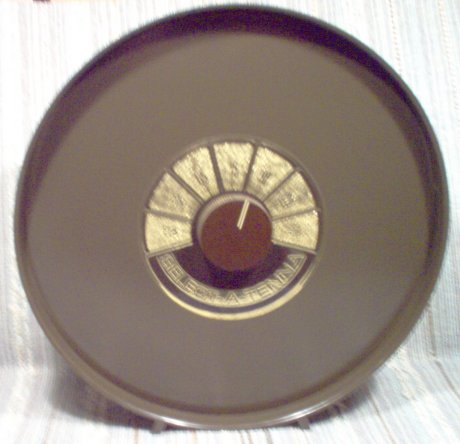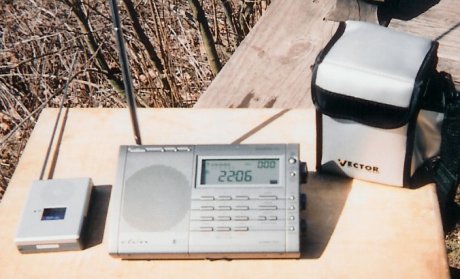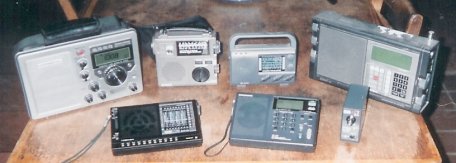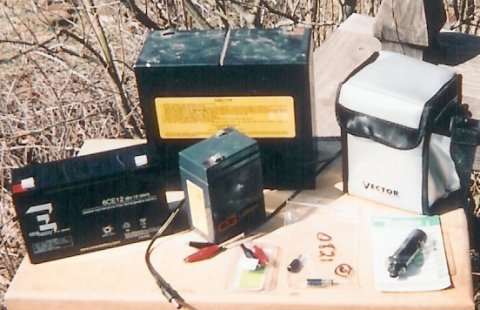|
A guide to self reliant living |
||||||||||||||||
|
6. Kerosene heaters and cookers
12.
Electrical; generators
Miles Stair's SURVIVAL
Miles Stair's
SURVIVAL |
CHOOSING A PORTABLE SURVIVAL RADIO by New England Gardener New Survival Radio!
The most common type of radio receives the AM broadcast band. At night, a good quality radio will allow you to hear stations over a thousand miles away.
To improve AM reception, A Select-A-Tenna unit is available.
Now is the time to make a list of news radio stations you can hear, what frequency they are on, and what city they are in. During both World Trade Center bombings, I was able to tune in to New York City stations that had there own reporters on the scene, giving live coverage. A resource to help you find these stations is www.radio-locator.com/. Here in southern New England, I can get stations from Quebec and Montreal Canada, Boston, NYC, Washington, DC, Atlanta, and Chicago. During the great northeast blackout in the 1960's, I was able to get weak local stations in the Deep South, on a cheap shirt pocket radio because the local stations on those frequencies were off the air. The same holds true for SHORTWAVE radios, without the interference from electrical power and other transmitters, even a cheap radio will get far away stations.
Features are added to the radios design, to overcome interference. The lower half of the price range is dominated by analog models. They can perform quite well, and draw very little battery power. You want a separate fine tuning knob, and a signal strength meter or LED light. The more segments or bands the shortwave frequencies are divided into the better. Dual conversion is a desirable feature to overcome interference.
The next step up in performance is to have a digital readout so you can see exactly what frequency you are tuned to. Now you can really use the list. The upper half of the price range is dominated by radios that are tuned digitally. They are offered with many convenience features like timers and clocks, but having a memory of stations stored right inside, and the ability to tune them immediately is there real advantage to me. This group is better if you will be listening not only to broadcast programs, but people talking back and forth to each other (Amateur, Military, FEMA etc.). You will want single side band for that.
When I heard Flight 800 went down in Long Island Sound, I picked up my Grundig Satellite 700, and listened to the short wave frequencies used by the Coast Guard and by commercial aircraft over the Atlantic Ocean, stored in its memory (That model radio is out of production). The little computers inside these radios can make them do many things, but you have to study the manual, to make that happen. Sort of like programming a VCR. None of these radios have pleasant room filling sound. The very small radios become tiresome to listen to, and the midsize ones will distort, if turned up loud enough to hear across the room, but you can use headphones, or a set of computer speakers to overcome that. - New England Gardener
|
1. Food | 2.
Manna Meals | 3. Water |
4. Sanitation | 5. Medical, health |
| 6. Kerosene heaters and cookers | 7. Lighting | 8. Wood cooking and heating | | 9. Communications | 10. Essential Tools | 11. Home built items | | 12. Electrical; generators and power | 13. War preparedness | 14. Gardening |
| HOME |
PROPHECY
| PREPARATIONS
| QUICKENING
NEWS | COMMENTARY
BY MILES |
| GUEST SUBMISSIONS | BOOKLETS BY MILES | CONTACT INFORMATION | | LINKS | RADIATION INDEX & JET STREAM | DEVOTIONAL ITEMS | | PHOTO INDEX | LIBRARY | SURVIVAL SHOP
|
|
||||||||||||||


